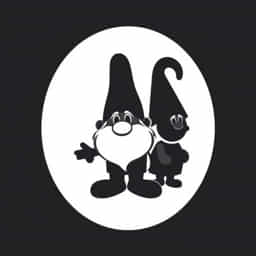Noddy, Sly, and Gobbo are characters who have captivated children’s imaginations for generations. Originating from Enid Blyton’s beloved children’s series, these characters live in the colorful and whimsical world of Toyland. While Noddy is known for his innocent, friendly nature and his iconic little red and yellow car, Sly and Gobbo add an intriguing dynamic to the stories with their mischievous and sometimes troublesome behavior. The contrast between Noddy’s goodness and the goblins’ antics offers a meaningful narrative for young readers and viewers. This relationship forms the basis of many memorable adventures and lessons in morality, fairness, and friendship that continue to resonate today.
Who Is Noddy?
Noddy is a wooden toy who comes to life in Toyland, a place where toys and dolls live in harmony. With his blue hat that has a tinkling bell and his joyful personality, Noddy is loved by many. He is always ready to help his friends and is known for his honest and trusting nature. He drives a small taxi, which he uses to earn his living by helping others get around Toyland. Although sometimes naive, his heart is always in the right place.
Character Traits of Noddy
- Kind and generous
- Hardworking and honest
- Naive but brave
- Loyal to friends like Big Ears and Tessie Bear
The Role of Sly and Gobbo
Sly and Gobbo are goblins who frequently act as the antagonists in Noddy’s world. These two are constantly plotting tricks and pranks, often for selfish gain or just to cause mischief. They contrast sharply with Noddy’s innocence and often challenge the values he represents. Sly is usually the brains behind their misdeeds, while Gobbo is his loyal but less intelligent companion. Although they rarely succeed in their plans, their antics add conflict and excitement to the stories.
Typical Goblin Behavior
- Playing tricks on other Toyland residents
- Stealing or hiding things
- Lying and deception to get what they want
- Running away when caught or faced with consequences
The Moral Landscape of Toyland
One of the key reasons why Noddy stories remain popular is the strong moral framework they present. The repeated confrontations between Noddy and Sly and Gobbo are not just playful adventures; they are stories of right and wrong. Children are able to learn through Noddy’s actions and mistakes. While Sly and Gobbo serve as examples of what not to do, their eventual punishments reinforce the value of honesty, kindness, and community cooperation.
Lessons Children Learn
- Helping others is always the right thing to do
- Lying and stealing never lead to true success
- Forgiveness is important, even toward those who do wrong
- Standing up for what is right requires courage
Television Adaptations and Popularity
Over the years, the story of Noddy, Sly, and Gobbo has been adapted into multiple animated television series. These include Noddy’s Toyland Adventures, Make Way for Noddy, and the more recent Noddy, Toyland Detective. Each iteration brings a new style of animation and storytelling but retains the core personalities of the characters. Sly and Gobbo are consistent as the tricksters who challenge Noddy, often appearing in episodes with themes of solving problems, discovering secrets, or catching culprits.
Impact of Television
Through TV, Noddy’s world has reached a broader audience. The visuals enhance the stories, making it easier for children to understand the emotions and actions of each character. The presence of Sly and Gobbo in the shows keeps the episodes engaging and teaches young viewers how to respond to bad behavior and make better choices.
Noddy’s Friends and Support System
In many of his adventures, Noddy is not alone. He has a group of supportive friends who help him through challenges. Big Ears, his wise and caring mentor, often offers advice. Tessie Bear provides emotional support and companionship. Together, they often help Noddy outsmart Sly and Gobbo or repair the damage caused by their tricks. These friendships highlight the importance of teamwork and trusting others in times of trouble.
Importance of Friendship in the Series
- Friends guide Noddy when he is unsure
- They help solve problems and fix wrongs
- Friendship is shown as a source of strength
- Positive social values are emphasized
Why Sly and Gobbo Continue to Appeal
Despite being the troublemakers, Sly and Gobbo have a certain charm. Children enjoy watching their schemes unfold and are often amused by their failure. These characters are not evil; they are more like naughty children who make bad choices. This makes them relatable to young audiences, who sometimes misbehave themselves. Their presence provides an important contrast that allows kids to better understand consequences and justice.
Comic Relief and Tension
Sly and Gobbo also add humor and tension to the stories. Their exaggerated personalities and predictable failures make them both entertaining and harmless. They serve a valuable narrative purpose and are essential to the dynamic storytelling of the Noddy universe.
Modern Relevance of Noddy Stories
Even in today’s digital world, the stories of Noddy, Sly, and Gobbo remain relevant. The themes of friendship, responsibility, and morality are timeless. The simple storytelling and clear character roles help young viewers and readers develop an understanding of good behavior and the results of bad choices. With new adaptations and digital formats, these tales continue to reach new generations.
Digital and Educational Use
- Noddy episodes are used in schools and homes for learning
- Games and apps make the stories interactive
- Merchandise helps reinforce positive values through play
Noddy, Sly, and Gobbo create a balanced story environment full of fun, lessons, and imagination. While Noddy represents the heart of kindness and responsibility, Sly and Gobbo bring contrast and learning opportunities through their mischief. Their adventures in Toyland are more than just entertaining; they teach values that children can carry throughout life. Whether through books or animated series, this trio continues to play a significant role in children’s development and entertainment.
